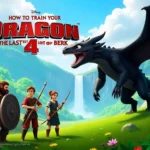Introduction
For many gamers, one of the most important questions before starting a new game is: “How long will it take to beat?” The time commitment required to complete a game varies significantly across different genres and player preferences. The concept of “How Long to Beat” (HLTB) has gained traction as a useful metric for gamers who want to plan their gaming sessions efficiently. This article explores how gameplay length differs across genres, the key factors influencing completion time, and how developers balance content length to cater to diverse audiences.
Gameplay Length Across Genres
Game length is heavily influenced by its genre. Some genres are inherently designed for short bursts of play, while others demand dozens or even hundreds of hours. Below is a breakdown of average completion times for various genres:
- Action & First-Person Shooters (FPS): 6-12 hours
- Platformers: 5-15 hours
- Role-Playing Games (RPGs): 40-100+ hours
- Open-World & Sandbox Games: 30-150+ hours
- Strategy & Simulation Games: Varies widely (10-200+ hours)
- Puzzle & Indie Games: 3-15 hours
- Multiplayer & Live-Service Games: Ongoing with no definitive “completion”
For example, a fast-paced shooter like Call of Duty: Modern Warfare typically takes around 6-8 hours to complete the main story, whereas a sprawling RPG like The Witcher 3: Wild Hunt can demand 50-100 hours just to finish the main questline.
Factors Affecting Completion Time
Several factors influence the length of time it takes to complete a video game:
1. Game Design & Complexity
- Linear games tend to have shorter playtimes, as they offer a straightforward path to completion.
- Open-world games often feature side quests, exploration, and player-driven pacing, leading to longer playtimes.
2. Playstyle & Player Engagement
- Main Story Focused: Players who only complete the main storyline will experience a significantly shorter playtime.
- Completionists: Those who seek to unlock all achievements, complete side quests, and explore every inch of the game world can double or triple the expected playtime.
- Casual vs. Hardcore Gamers: Some players take their time immersing themselves in the story and mechanics, while others aim to finish as quickly as possible.
3. Difficulty & Learning Curve
- Harder games, such as Dark Souls or Sekiro: Shadows Die Twice, require repeated attempts to progress, extending total playtime.
- Games with intricate mechanics or strategic depth (e.g., Crusader Kings III) demand more learning and experimentation, making them longer experiences.
4. Player Choice & Narrative Branching
- Games with multiple endings, like Detroit: Become Human or Undertale, encourage multiple playthroughs, extending overall gameplay time.
- Role-playing games with moral choices, like Mass Effect, offer different narrative paths, affecting playtime based on the depth of player decisions.
5. Online & Multiplayer Elements
- Competitive games (League of Legends, Fortnite) lack a defined “completion time” as they are designed for long-term engagement.
- Co-op games (Destiny 2, Monster Hunter: World) vary in length depending on team coordination and difficulty levels.
How Developers Balance Game Length
Game developers carefully design content to balance gameplay time in ways that appeal to different audiences. Here are some strategies they use:
1. Modular Content Design
Many modern games include structured content like story-driven campaigns, side quests, and procedurally generated missions. This approach allows developers to create games with adjustable length based on player preference.
2. Difficulty Modes & Accessibility
Offering various difficulty levels helps adjust playtime; easier modes allow quicker completion, while harder modes provide extended challenge.
3. Procedural Generation & Replayability
Some games, like Hades and No Man’s Sky, use procedural generation to create endless variations, ensuring long-term engagement.
4. Post-Launch Support & DLCs
Developers extend game lifespans through DLCs, expansions, and seasonal updates, keeping players engaged beyond the base game’s completion time.
The Role of ‘How Long to Beat’ in Gaming Culture
HLTB has become an essential tool for gamers who need to plan their gaming time effectively. Websites like “HowLongToBeat.com” compile player-submitted data to provide estimates for different playstyles, helping users decide if a game fits their schedule.
Conclusion
Game length is a crucial factor in the gaming experience, influenced by genre, player behavior, and design choices. While some players prefer short, narrative-driven experiences, others embrace the commitment of lengthy RPGs or open-world adventures. Understanding the factors that influence game length allows developers to create balanced experiences and helps gamers make informed choices about their next adventure.







